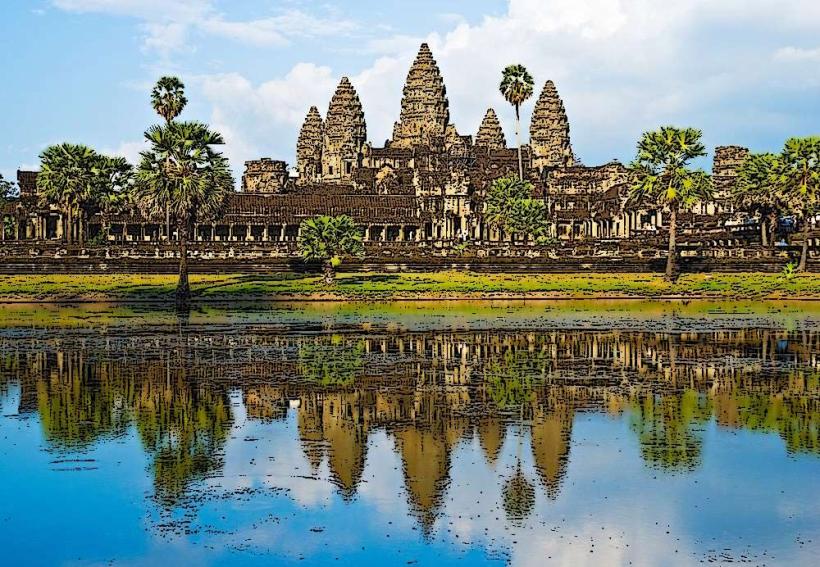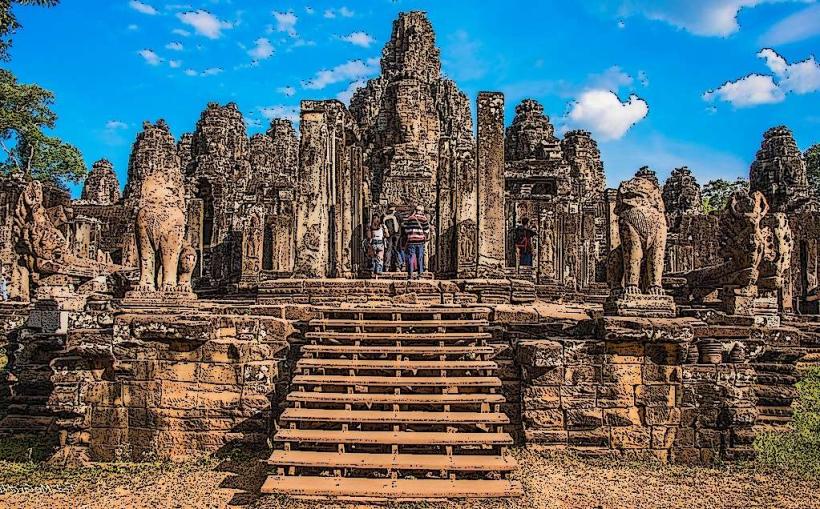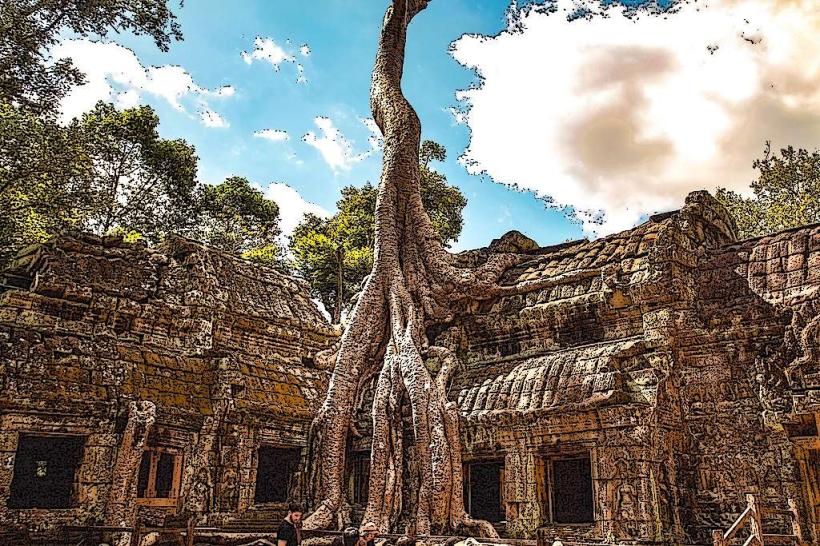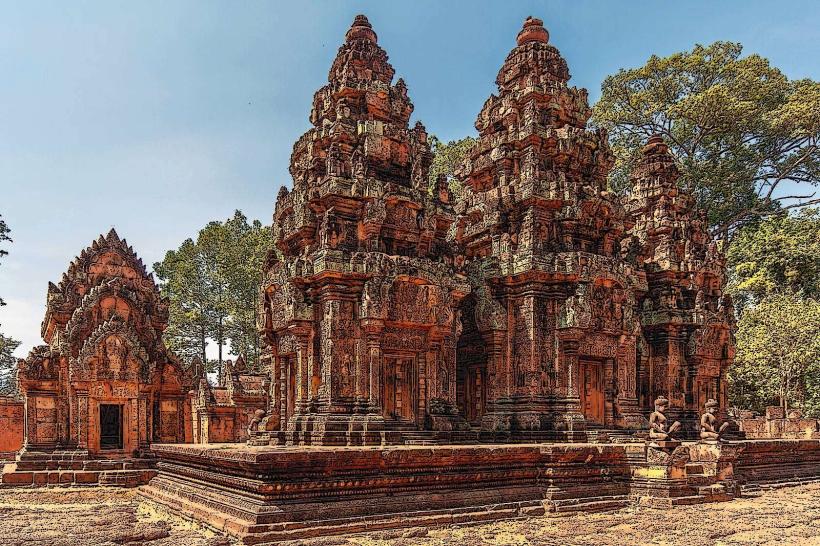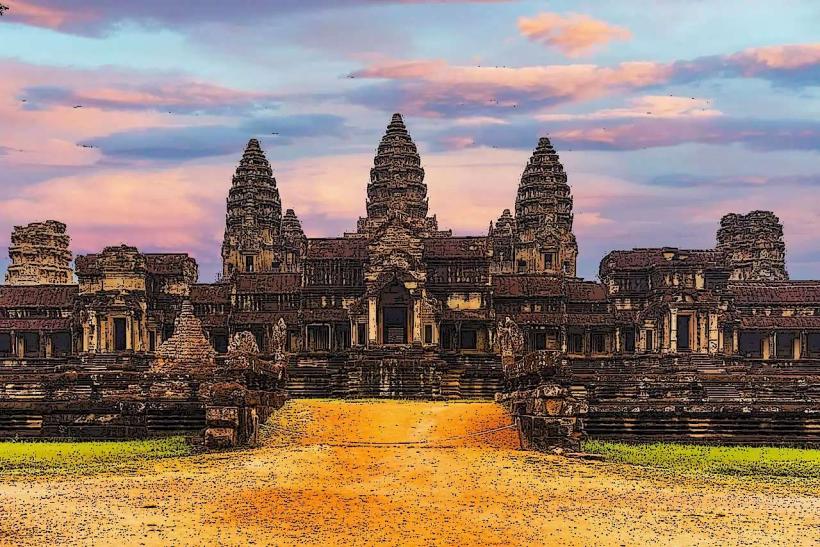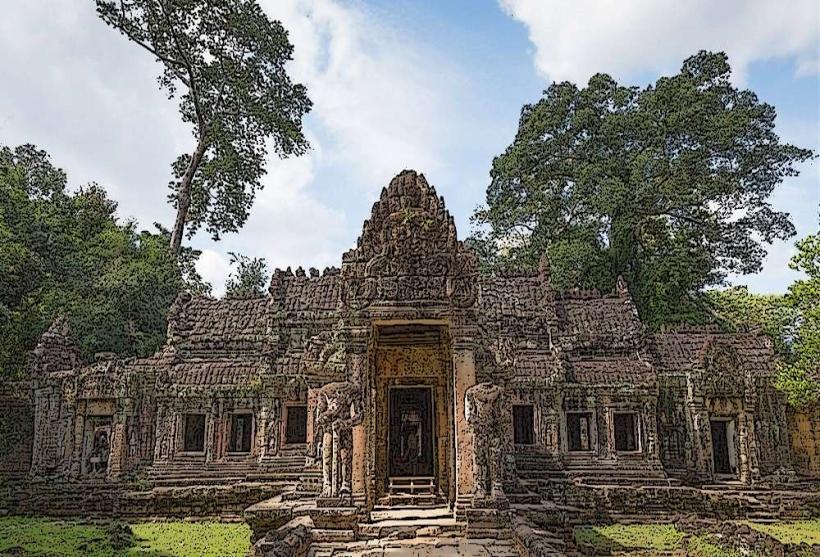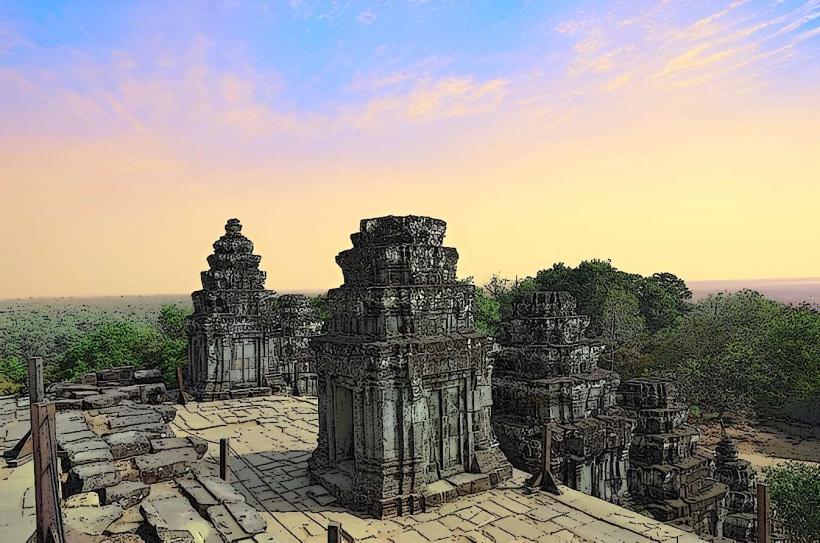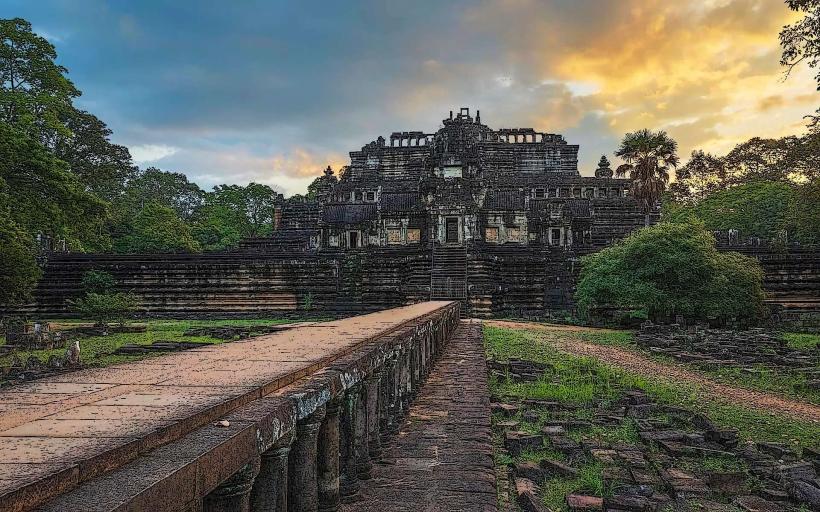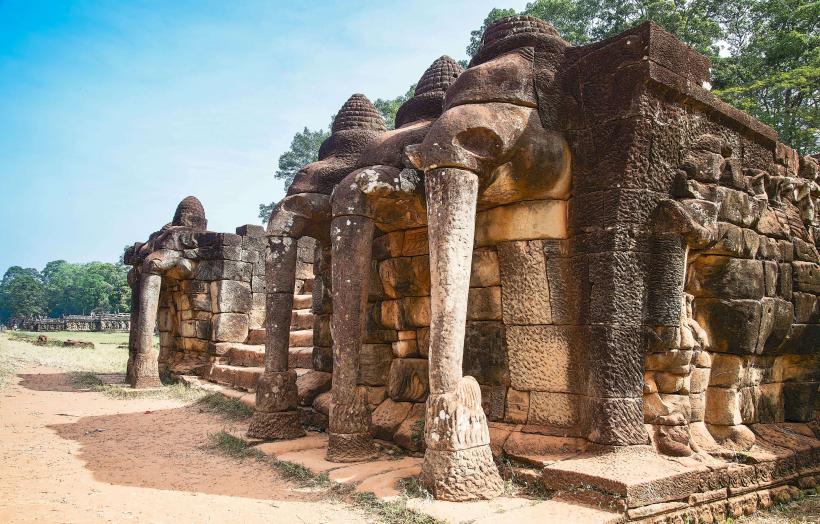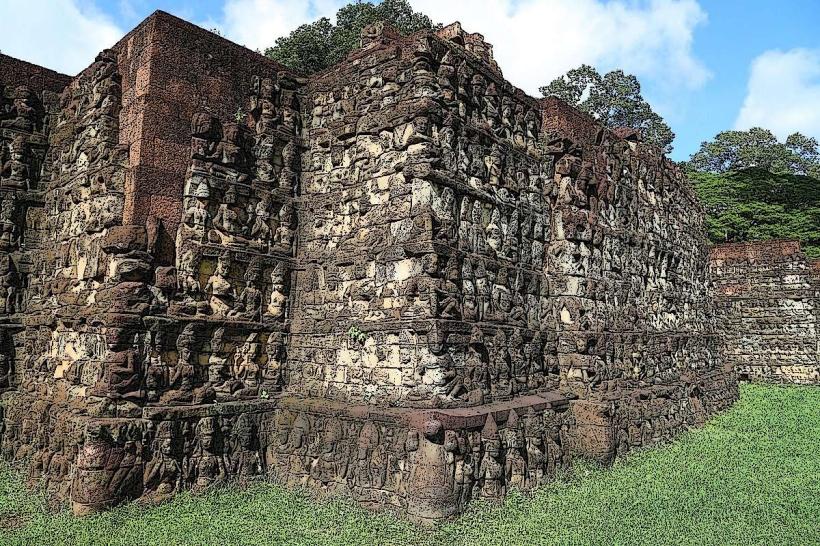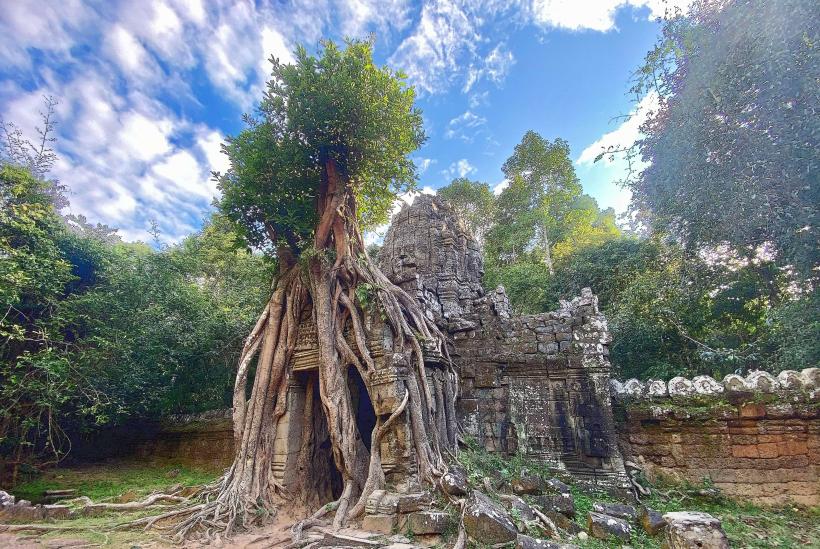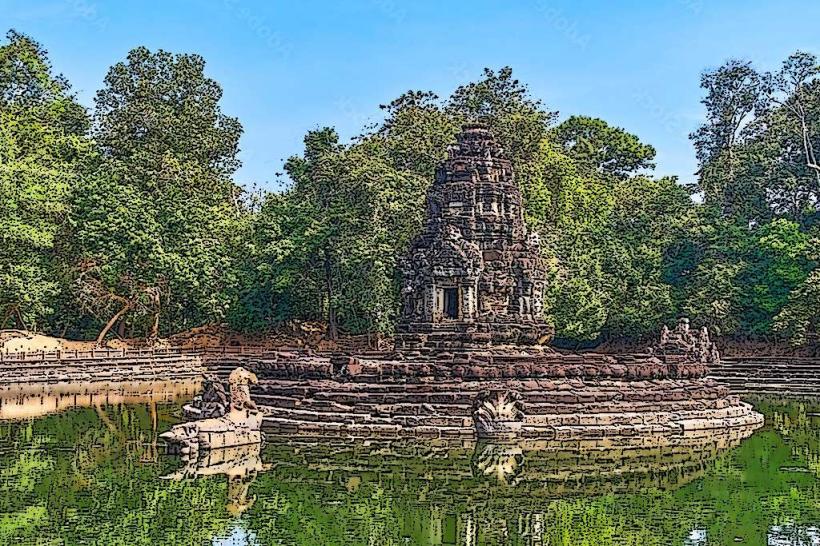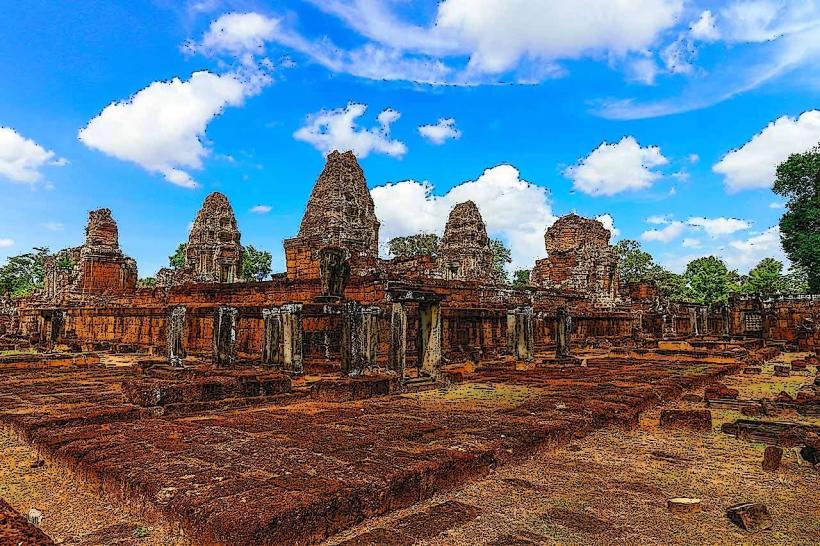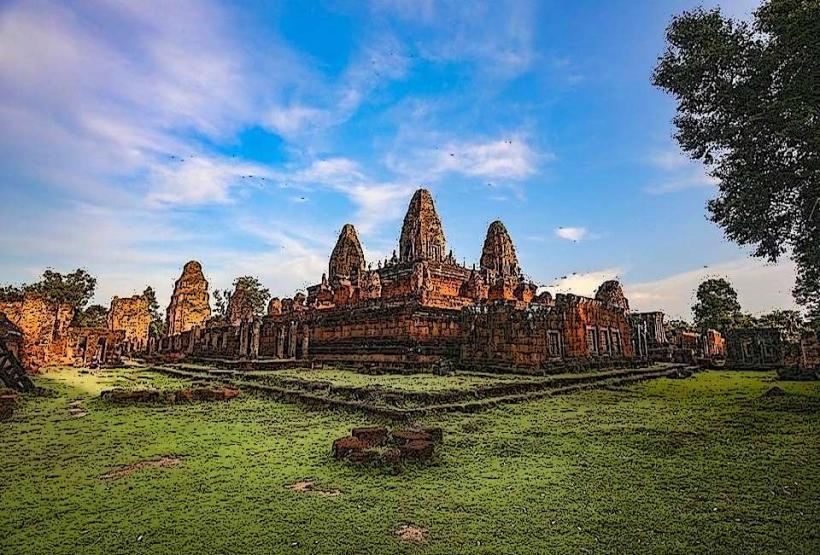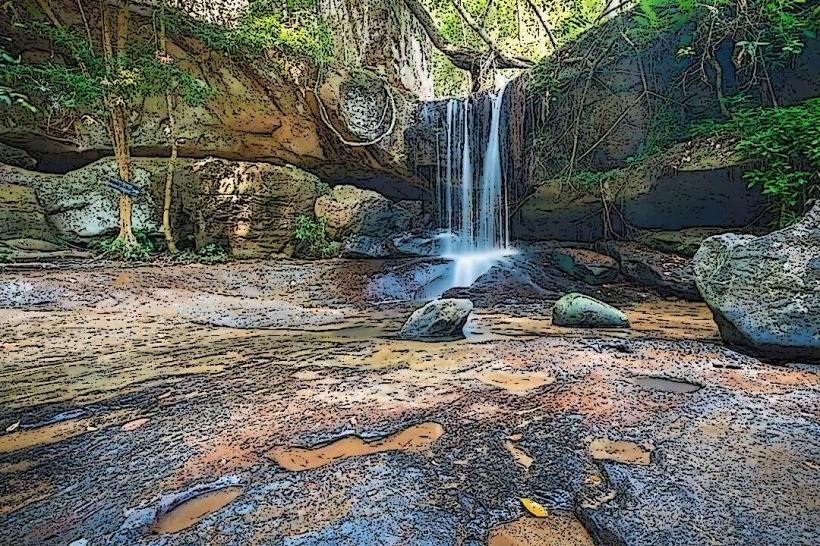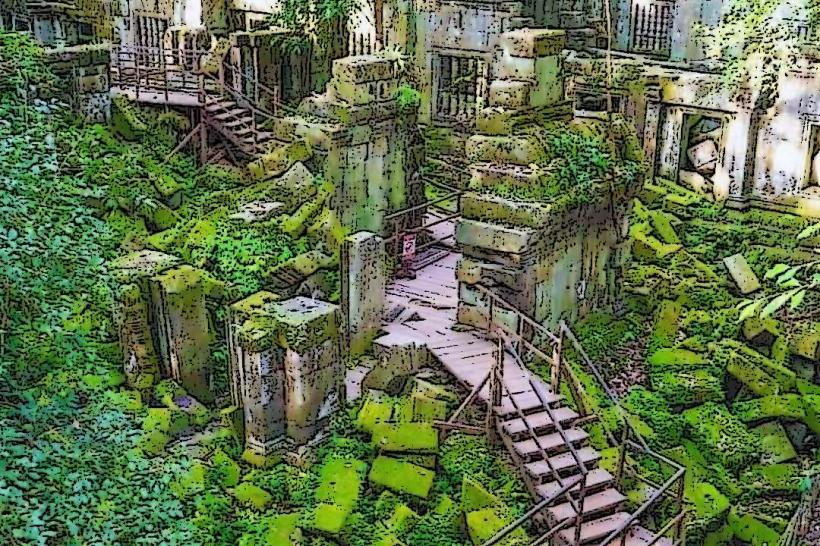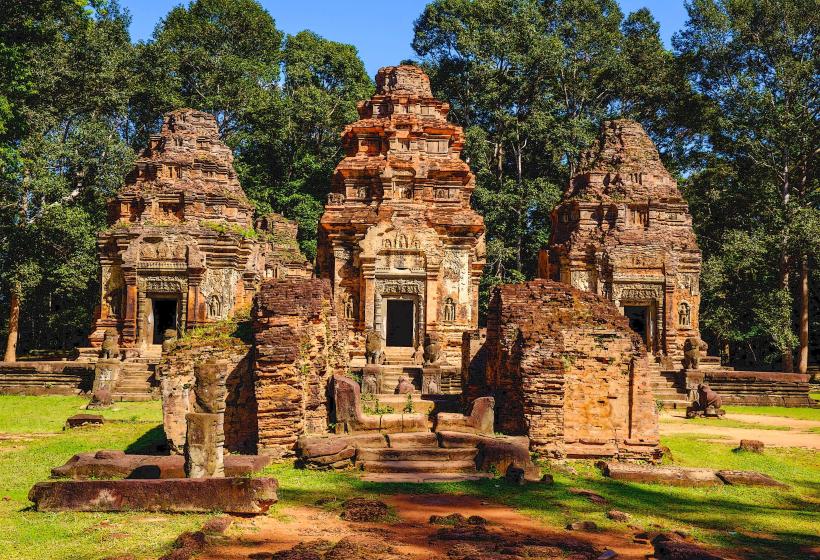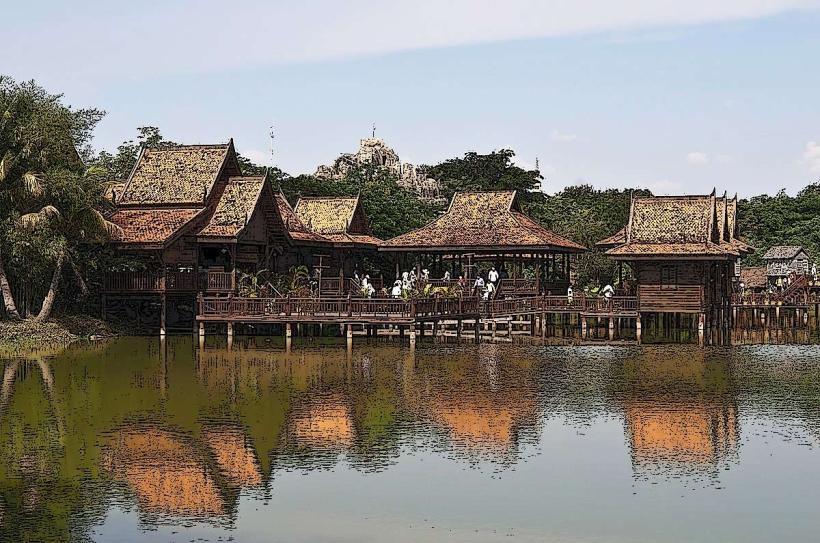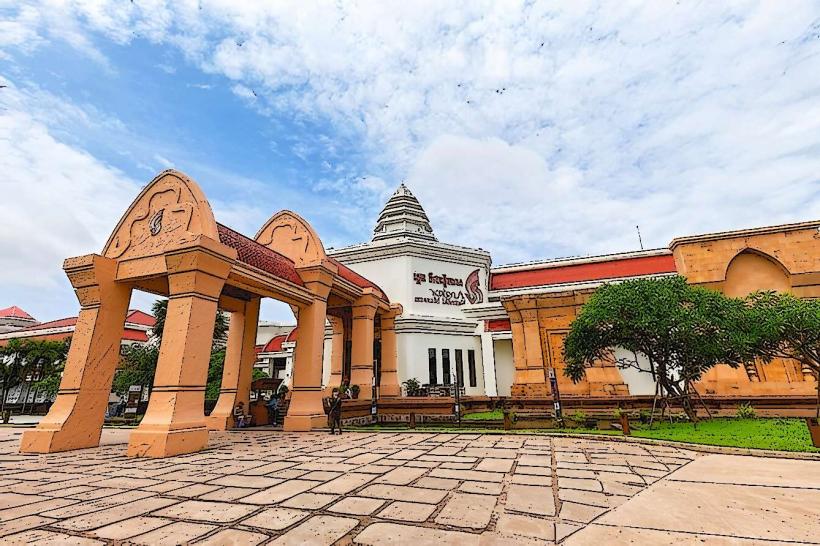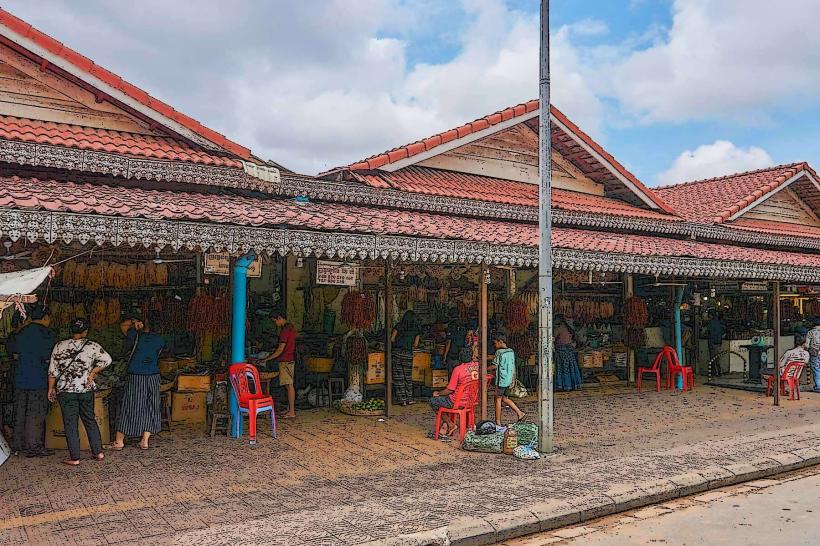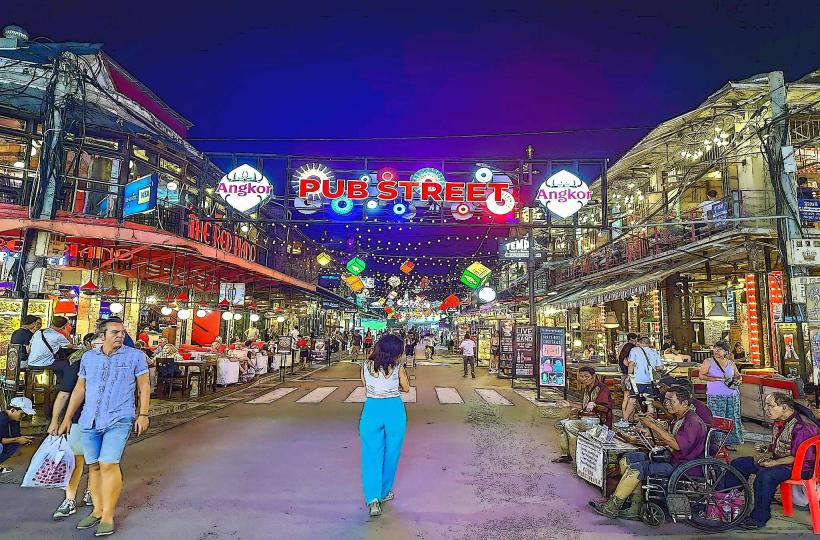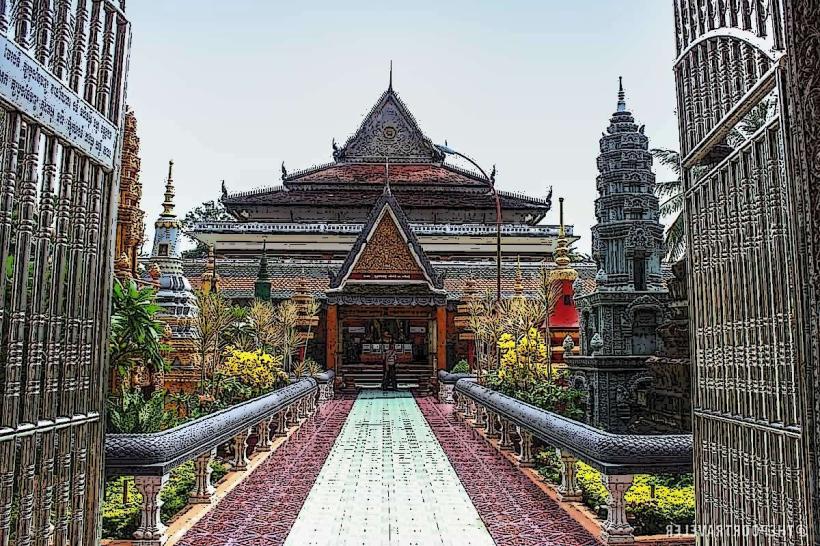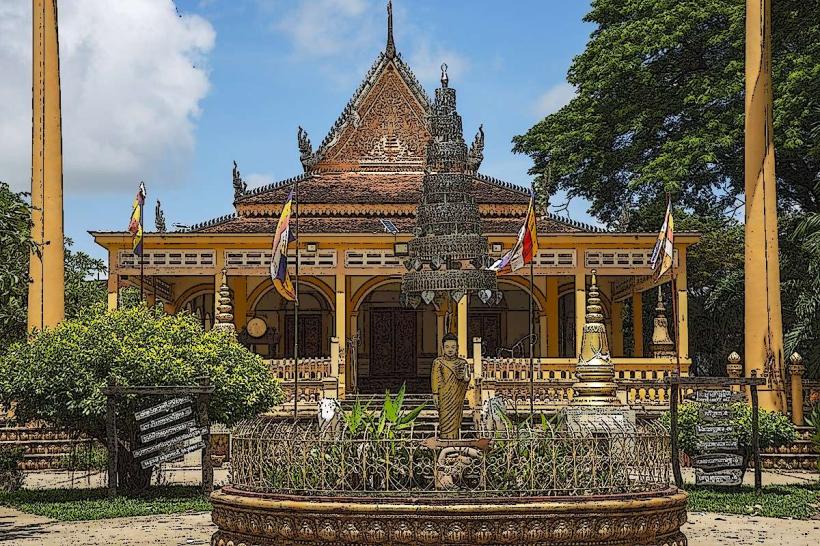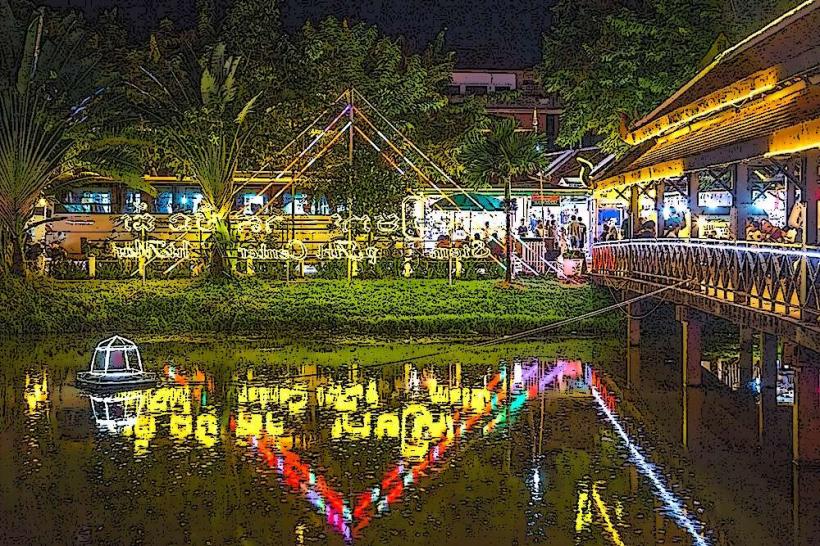Information
Landmark: Tonle Sap LakeCity: Siem Reap
Country: Cambodia
Continent: Asia
Tonle Sap Lake – Cambodia’s Life-Giving Waterway
Tonle Sap Lake is the largest freshwater lake in Southeast Asia and one of the most important natural resources in Cambodia. It plays a vital role in the country’s ecosystem, economy, and cultural identity. This immense lake is known for its unique hydrological system and the way it dramatically changes in size with the seasons.
Overview
- Tonle Sap Lake covers an area of approximately 2,500 square kilometers during the dry season but expands to over 12,000 square kilometers during the wet season (rainy season). This fluctuation makes it one of the largest freshwater lakes in the world, and its rich biodiversity supports a wide array of plant and animal life.
- It is connected to the Mekong River by the Tonle Sap River, and the flow of water into and out of the lake is influenced by the seasonal changes in the Mekong, creating a remarkable natural phenomenon where the direction of the river can reverse.
Ecological Significance
Tonle Sap Lake is considered the lifeblood of Cambodia, as it provides vital resources for both the environment and the people who live around it.
- Biodiversity: The lake and its surrounding wetlands are home to an incredible range of wildlife, including over 200 species of fish, as well as migratory birds, amphibians, and various aquatic plants. It supports one of the world’s largest inland fisheries and is a UNESCO Biosphere Reserve, highlighting its importance in global biodiversity.
- The fish population in Tonle Sap plays a critical role in the diet of millions of Cambodians, with fish and aquatic resources making up a significant portion of the country’s food supply.
- The surrounding flooded forests, swamps, and grasslands are particularly important for breeding and nesting for many species of birds, making the lake an essential habitat for migratory bird populations, particularly during the dry season.
Economic Importance
Tonle Sap Lake is central to the livelihoods of millions of Cambodians. The lake sustains one of the largest inland fisheries in the world, which provides a significant portion of Cambodia’s protein intake.
- Fishing: Fishermen in the region harvest freshwater fish such as carp, catfish, tilapia, and snakehead. The annual fish harvest is crucial for both local consumption and export. It’s estimated that over one million people depend on the lake for their livelihood.
- Agriculture: In addition to fishing, the land surrounding Tonle Sap is also used for agriculture. During the wet season, the rising water levels help enrich the surrounding soils, creating a fertile environment for crops like rice.
- Tourism: The lake also attracts tourists who are drawn to its unique environment and picturesque landscapes. Visitors often enjoy boat tours around the lake, where they can witness the floating villages and learn about the life of the local communities.
Floating Villages
One of the most fascinating aspects of Tonle Sap Lake is the presence of floating villages. These villages are built on the water itself, with homes, markets, and schools constructed on floating platforms. They offer a unique insight into how people adapt to live in harmony with the lake’s ever-changing water levels.
- Kampong Phluk: One of the most famous floating villages, Kampong Phluk is known for its stilted houses and the mangrove forests that surround it. Visitors can take a boat ride through the narrow channels to experience the village and see how local families have built their homes on the lake.
- Kampong Kleang: Another well-known floating village located on the lake, Kampong Kleang is less commercialized than others and offers a more authentic view of local life. It is home to many fishermen, and the community’s relationship with the lake is integral to their way of life.
- Chong Kneas: A popular village for tourists, Chong Kneas is located near Siem Reap and has many boats for tourist tours around the lake, providing an opportunity to experience the floating markets and homes.
Challenges and Environmental Threats
Despite its ecological and economic importance, Tonle Sap Lake faces several environmental challenges, including:
- Overfishing: As the demand for fish continues to rise, the lake’s fisheries are under pressure. Overfishing has led to a decrease in fish stocks, which affects the livelihoods of local communities and threatens the long-term sustainability of the lake’s ecosystem.
- Climate Change: Climate change is affecting the rainfall patterns and water levels of the lake. Reduced rainfall and higher temperatures have led to erratic water levels, which can disrupt the traditional fishing cycles and the agricultural activities around the lake.
- Pollution: The surrounding communities have been struggling with pollution from both industrial waste and agricultural runoff. This pollution can harm the water quality and further disrupt the delicate balance of the lake’s ecosystem.
- Deforestation: The mangrove forests that surround the lake are also under threat from deforestation. These forests are important for water filtration, wildlife habitat, and as protection for the floating villages from flooding.
Tourism and Activities
Tonle Sap Lake is a popular destination for tourists looking to experience the unique culture and natural beauty of Cambodia.
- Boat Tours: One of the most popular activities is taking a boat tour around the lake to visit the floating villages. These tours offer a chance to learn about the lives of the fishermen and farmers who depend on the lake for their livelihood.
- Bird Watching: For nature enthusiasts, bird watching is a major attraction. The lake is a key habitat for migratory birds, and visitors can often see egrets, herons, kingfishers, and even endangered species such as the Sarus Crane.
- Fishing and Agriculture: Some tourists enjoy visiting the local fishing villages to observe the traditional fishing methods. Visitors can also learn about how the seasonal flooding benefits agriculture in the region.
Practical Information
- Location: Tonle Sap Lake is located in central Cambodia, about 15 kilometers south of Siem Reap, near the famous Angkor Wat temple complex.
- Best Time to Visit: The best time to visit Tonle Sap Lake is during the wet season (from May to October), when the lake reaches its largest size. This is when you can see the full extent of the flooded forests and the floating villages.
- Getting There: From Siem Reap, visitors can take a boat tour to Tonle Sap Lake or travel by tuk-tuk to the lakeside communities. Guided tours are available, and boat rentals are often arranged through local tour operators.
Conclusion
Tonle Sap Lake is a remarkable natural wonder with ecological, economic, and cultural significance. It sustains millions of people and supports one of the world’s most diverse aquatic ecosystems. Despite facing environmental threats, it remains a central part of Cambodian life and offers a unique glimpse into the country’s water-based cultures. Whether you're interested in nature, local culture, or simply want to experience a different side of Cambodia, Tonle Sap Lake is a must-visit destination.

